What we have learned from a couple decades of research is that the Atlantean enterprise reached its apex influence around 2400 BC. This meant that it created what we can call trade factories all over the globe and also produced large urban centers supporting its signature pyramid complexes. For that reason Atlantis happens to be almost everywhere in some form or the other as long as you address the time slot 2400 BC through 1159 BC when the whole edifice fell apart through the direct loss of its cultural center.
They chose to create centers everywhere and all this was paid for through their use of small copper ingots to act as money. This would include native copper, natural brass and alloyed bronze as well. Other copper ores were processed as well to produce a lower quality alloy that certainly could be used to produce armor and the like. This was a global enterprise and the copper from Lake Superior provided the tool grade copper for the work on the Great Pyramid.
This culture lasted continuously for at least 1200 years after its global expansion and urely had a long prehistory as well in the lands of Atlantis itself and Poseidon. Its existence surely triggered the emergence of early writing everywhere and a late refinement that produced Greek script.
Conjecture Chinese style script was deliberately engineered in order to preserve empirical knowledge and translate it down through time over unstable languages. Thus we still have access to centuries of Chinese traditional medicine.
Conjecture They are all right because it was global and locally independent under a chief factor..
.
Atlantis in India: Did Plato’s Lost City Exist in the East?
https://www.ancient-origins.net/unexplained-phenomena/atlantis-india-0011657
Available
written evidence indicates that a site known as ‘The Lost City of
Atlantis’ corresponds to an ancient site in India that has been hidden
for millennia. According to this investigation, there has been a major
erratum among cartographers resulting in the ancient history of India
being hidden.
Atlantis in India
The geological, zoological, botanical, geographical, climatological, sociological and historical evidence found in the region indicates that Girinagar mountain-complex has all the characteristics of the lost civilization of Atlantis . However, the suggestion that this site is Atlantis is still theoretical, a work in progress; therefore we must find physical evidence of this ancestral civilization
.
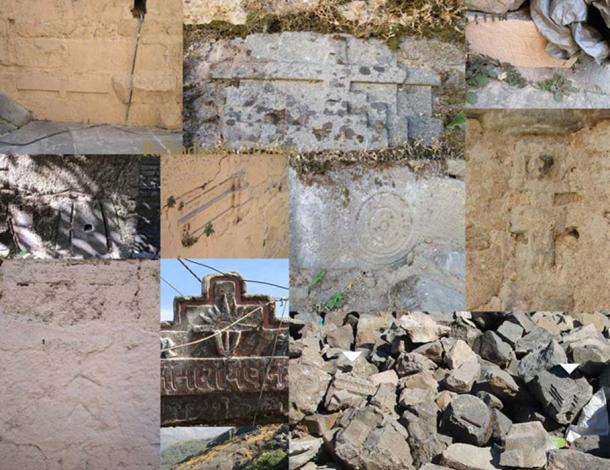
Artifacts of unknown origin at Girinagar. Note the two pieces of the old temple. (Author provided)
The geography and dense cultural environment of India has
similarities with few other places around the world, and its emerging
archaeological sites suggest a specific preference for this country to
be a candidate in the search for the forgotten original land. Known
references to Atlantis are associated with Egypt and the Greece of Plato.
Therefore, in the search for an antediluvian pre-classical society having frequent and regular contact with the Greeks, it is prudent not to search for a site located in the Atlantic Ocean or in the Caribbean Sea, where in fact there was an absence of any Greek presence. One should note that artifacts or any other cultural vestiges that indicate the presence of ancient Greece are absent beyond the Italian island of Sicily.
In the search for Atlantis, I put it to you that there is a logical destination which was known to the Greeks: Asia, the developed world of that time, the place so many from the Mediterranean were looking to as a source of knowledge and trade opportunities. And in the Peninsula of Khatiawar in West India at the geographical location with the coordinates: 21° 31’ 40” 00 N 70° 31’ 40” 00 E, a mountain-complex presenting rare geological features has been identified.
+
We believe that this mountain-complex, locally called Girnar or Girinagar Mountain, shows all the historical and geomorphological characteristics of the civilization mentioned by the Greek philosopher Plato in 350 BC, the so called: “ Lost City of Atlantis ”.
+
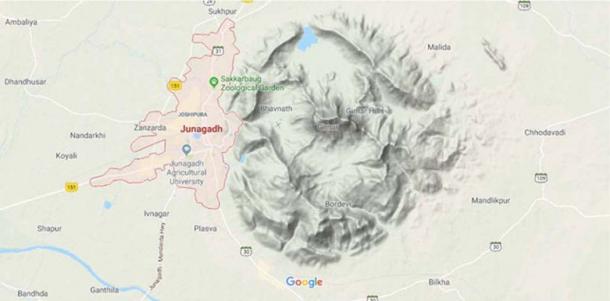
Girnar Mountain. (Google Maps)
Why the Shift to the West?
The geographical references of the Greek historical and religious accounts have been diverted from the East, the obvious place of great interest, to the West, the land of the early ‘barbarians’, a land with little known civilization in the eras before the present. But the strait where Iran and Oman lie today was the gate to the unknown world of the East, a place where the ancient cultures developed first. Perhaps for the ancient Greeks, the Columns of Hercules were not in Gibraltar but at the end of the Persian Gulf, and beyond was the Indus Valley Civilization . Yet historical records cannot confirm the exact position of the Columns of Hercules. All we know about the Columns of Hercules and the Atlantic Ocean is a long series of repetitions of an initial assumption based on a possible historical erratum.
The major alteration may have been conceived during the European Middle Ages, possibly to divert attention from India. During the Middle Ages, the Tribunal of the Inquisition was actively judging pagans and heretics who worshipped ancient religions. This theory postulates that the erratum went so far that the German-Dutch cartographer, Gerardus Mercator (1512-1594), named the ocean passing Gibraltar the “Atlantic Ocean”. It is possible that Mercator used a reversed Middle Ages map, confusing the historical reports and substituting what was in the East with Gibraltar. Although the research is still in progress, we have reason to believe, therefore, that in the ancient past, for the Ancient Greeks, the cultures of references were located toward the East - Mesopotamia and India.
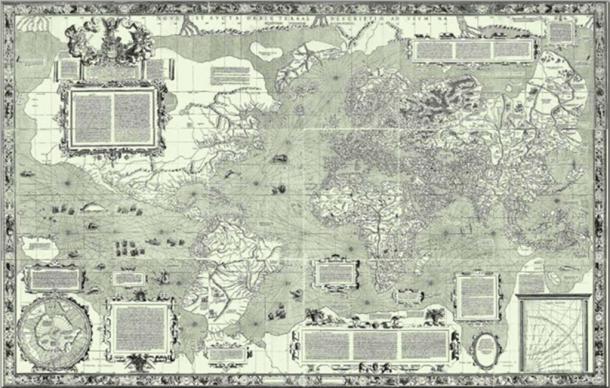
Mercator 1569 world map ( Nova et Aucta Orbis Terrae Descriptio ad Usum Navigantium Emendate Accommodata ) showing latitudes 66°S to 80°N. ( Public Domain )
Modifying Ancient Maps
Ancient cartographers used to work on old maps, modifying the existing knowledge to a different version of geography. As Mercator was a fervent servant of the State of the Church, he certainly had access to the archives in Rome, the old maps, and old manuscripts. Thus it is unlikely that Mercator would have made such a colossal mistake; he knew more about the ancient past of the world than anybody else. And in 1594, upon his death, his family published a new version of the Atlas ( Map of the World ). Because this was not done under Mercator’s supervision, someone may have changed something.
There is also another possible explanation: Mercator was very close to the Franciscan friars in the monastery of Mechlen, in particular to Friar Monachus; he was even jailed for this relationship, probably by the Protestant authority of the time. Monachus was an advisor on cartography with strong links to Rome who had a decisive influence over Mercator’s research throughout his career. Every scholar writing and creating references after Mercator assumed that the cartographer was right, so a long series of errors has occurred since the Atlas was printed.
But the mistake may be even older. There was a Byzantine cartographer born in Greece in the 6th century AD, Cosmas Indicopleustes, who spread the tale of the flat Earth . He might also be responsible for the deception in reversing the map of the world, apparently at the request of an unspecified high authority. In his book, reprinted in 1897 , Christian Topography, Cosmas said that Noah was living in the Garden of Eden and this was located to the East (of Greece) near the ocean that encircled the world.

‘Landscape of Paradise and the Loading of the Animals in Noah’s Ark’ (1596) by Jan Brueghel the Elder. ( Public Domain )
Life After a Supervolcano Eruption
But let us back up in time: Circa 74,000 years ago on the Indonesian island of Sumatra, the supervolcano Toba erupted , causing a massive blackout of the sky above the entire planet. For six years the Earth’s atmosphere was filled with ash and for another 1000 years the planet experienced continuous exceptionally wintry conditions.
The volcanic winter forced people from Central Asia to move south to milder conditions. Tribes from today’s Russia and even as far as Europe might have reached Africa and West India in search of warmer conditions, carrying the paternal chromosome R1a1a.
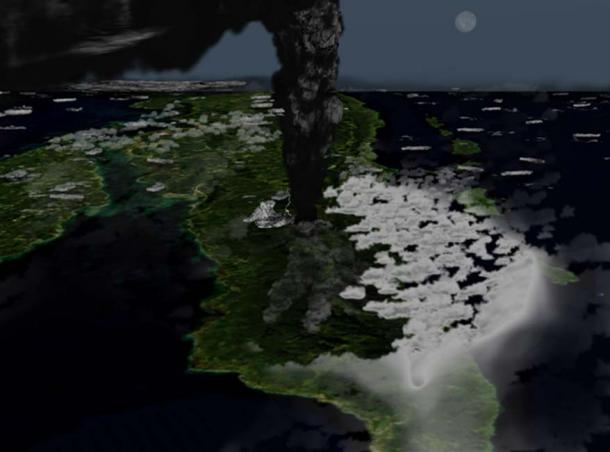
Illustration of what the Toba eruption might have looked like around 42 km (26.1 miles) above northern Sumatra. (Anynobody/ CC BY SA 4.0 )
In North India, prehistoric men settled on the high ground of the
Bhimbetka Caves and along the Narmada River. Because the eruption of
Toba shielded sunlight, temperatures dropped to freezing conditions;
hunter-gatherers, unprepared for this sudden change, were certainly
dying, even in tropical latitudes, both in the northern and southern
hemispheres.
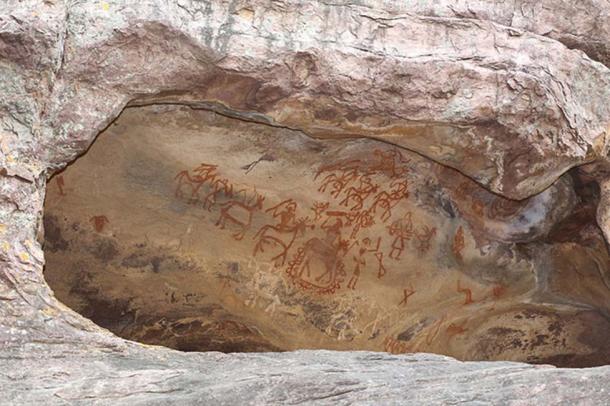 However, there is the possibility that men moving along the Narmada
River reached the Indian Ocean where deep water was warming the coast,
releasing heat stored in periods before the volcanic winter. Walking
around the Kathiawar Peninsula, the surviving tribes found a certain
number of geothermal hot water sources. According to Plato, Atlantis had
hot water from the ground, and in fact, the state of Gujarat is a volcanically active area where several geothermal hot water sources are still active.
However, there is the possibility that men moving along the Narmada
River reached the Indian Ocean where deep water was warming the coast,
releasing heat stored in periods before the volcanic winter. Walking
around the Kathiawar Peninsula, the surviving tribes found a certain
number of geothermal hot water sources. According to Plato, Atlantis had
hot water from the ground, and in fact, the state of Gujarat is a volcanically active area where several geothermal hot water sources are still active.
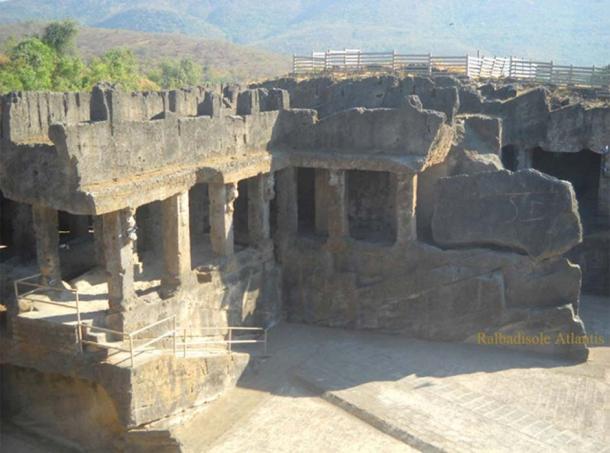
The Sanatoria on the right side of the West canal at Girinagar. (Author provided)
A Different Take on The Biblical Flood
A new approach to the Biblical flood explains how the world was destroyed, not from the ocean, as we hear from different sources, but from the mountains. Atlantis and the Garden of Eden were buried not under the sea, but under a wave of mud, while the mountain where the Citadel of Atlantis stood is still there, emerging from land destroyed by a deluge that filled its canals, ports, lakes, fountains, all the sacred waters - the essence of Atlantis.
A large scale event such as a regional earthquake or a meteorite could have set this in motion by breaking the banks of several glacial lakes existing in the Himalayas, for example the Chandra Valley Glacier and other lakes located at the base of the Himalaya range, where melting ice created large basins of water over many centuries. A tilt in the Earth’s orbit could have produced a major natural disaster during the later period of the Indus Valley Civilization.
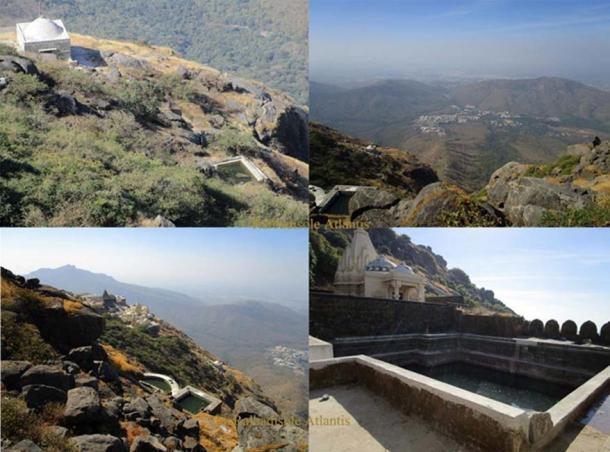
Water storage and ritual wells might be the ones made a very long time ago. (Author provided)
A chain of events made these lakes collapse and produced a series of
waves that traveled for over 1000 kilometers (621.37 miles) over the
flat plains of West India along the two large rivers present at the time
(the Indus and the Saraswati), and the water was channeled among two
mountain ranges, the Sulhaiman Range to the west and the Aravalli Range
to the east.
When the flood came down from the Himalayas it destroyed villages, farms, plantations, buildings - everything but the Citadel. This tip of the city-state was a symbol, a holy icon emerging from underground and is depicted in many cultures either in drawings or as a character in glyphs or ideograms as a peak or a tree emerging from the waters. Melting ice then raised the level of the world’s oceans by 120 meters (393.7 feet) while a shoal of mud blocked all passages and water supplies.
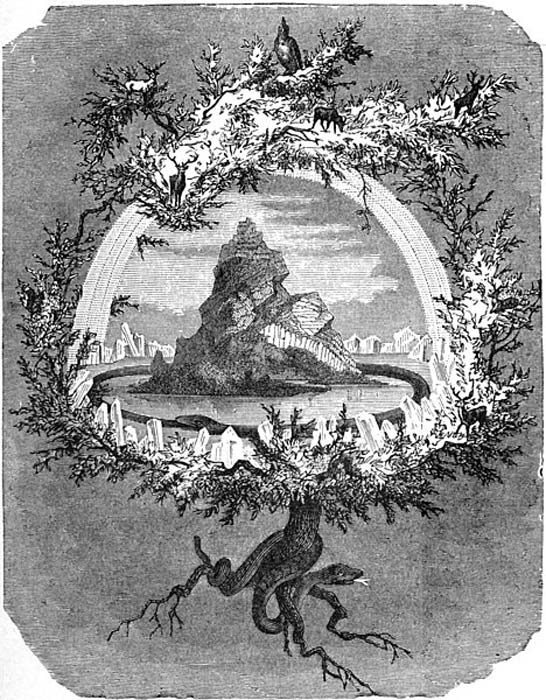
The lost civilization of Atlantis, as named by the Greek philosophers, is potentially the missing link between the hunter-gatherers and complex cultures such as Predynastic Egypt. The sudden development of agriculture in Mesopotamia and structured cities in the Mediterranean, and the way in which other cultures which resemble these have been found as far away as Mexico and Perú can be explained as a missing piece perfectly fitting the empty center of the mosaic.
The results of this research have the potential to link the written records with a physical place in a location that is credible. Virtually this entire section of history falls into place when comparing the evidence from many years of work by archaeologists. The discovery of the place where Atlantis once stood is a turning point to explain thousands of years of missing links.
This article is a summary of a work in progress paper of findings from written and other evidence, which can be found in the full length paper at Ralbadisole.org.
Top Image: Ancient town ruins. Underwater background. Was Atlantis actually in India? Source: Regisser.com /Adobe Stock
By E. B. Ralbadisole
Atlantis in India
The geological, zoological, botanical, geographical, climatological, sociological and historical evidence found in the region indicates that Girinagar mountain-complex has all the characteristics of the lost civilization of Atlantis . However, the suggestion that this site is Atlantis is still theoretical, a work in progress; therefore we must find physical evidence of this ancestral civilization
.

Artifacts of unknown origin at Girinagar. Note the two pieces of the old temple. (Author provided)
Therefore, in the search for an antediluvian pre-classical society having frequent and regular contact with the Greeks, it is prudent not to search for a site located in the Atlantic Ocean or in the Caribbean Sea, where in fact there was an absence of any Greek presence. One should note that artifacts or any other cultural vestiges that indicate the presence of ancient Greece are absent beyond the Italian island of Sicily.
In the search for Atlantis, I put it to you that there is a logical destination which was known to the Greeks: Asia, the developed world of that time, the place so many from the Mediterranean were looking to as a source of knowledge and trade opportunities. And in the Peninsula of Khatiawar in West India at the geographical location with the coordinates: 21° 31’ 40” 00 N 70° 31’ 40” 00 E, a mountain-complex presenting rare geological features has been identified.
+
We believe that this mountain-complex, locally called Girnar or Girinagar Mountain, shows all the historical and geomorphological characteristics of the civilization mentioned by the Greek philosopher Plato in 350 BC, the so called: “ Lost City of Atlantis ”.
+

Girnar Mountain. (Google Maps)
The geographical references of the Greek historical and religious accounts have been diverted from the East, the obvious place of great interest, to the West, the land of the early ‘barbarians’, a land with little known civilization in the eras before the present. But the strait where Iran and Oman lie today was the gate to the unknown world of the East, a place where the ancient cultures developed first. Perhaps for the ancient Greeks, the Columns of Hercules were not in Gibraltar but at the end of the Persian Gulf, and beyond was the Indus Valley Civilization . Yet historical records cannot confirm the exact position of the Columns of Hercules. All we know about the Columns of Hercules and the Atlantic Ocean is a long series of repetitions of an initial assumption based on a possible historical erratum.
The major alteration may have been conceived during the European Middle Ages, possibly to divert attention from India. During the Middle Ages, the Tribunal of the Inquisition was actively judging pagans and heretics who worshipped ancient religions. This theory postulates that the erratum went so far that the German-Dutch cartographer, Gerardus Mercator (1512-1594), named the ocean passing Gibraltar the “Atlantic Ocean”. It is possible that Mercator used a reversed Middle Ages map, confusing the historical reports and substituting what was in the East with Gibraltar. Although the research is still in progress, we have reason to believe, therefore, that in the ancient past, for the Ancient Greeks, the cultures of references were located toward the East - Mesopotamia and India.

Mercator 1569 world map ( Nova et Aucta Orbis Terrae Descriptio ad Usum Navigantium Emendate Accommodata ) showing latitudes 66°S to 80°N. ( Public Domain )
Ancient cartographers used to work on old maps, modifying the existing knowledge to a different version of geography. As Mercator was a fervent servant of the State of the Church, he certainly had access to the archives in Rome, the old maps, and old manuscripts. Thus it is unlikely that Mercator would have made such a colossal mistake; he knew more about the ancient past of the world than anybody else. And in 1594, upon his death, his family published a new version of the Atlas ( Map of the World ). Because this was not done under Mercator’s supervision, someone may have changed something.
There is also another possible explanation: Mercator was very close to the Franciscan friars in the monastery of Mechlen, in particular to Friar Monachus; he was even jailed for this relationship, probably by the Protestant authority of the time. Monachus was an advisor on cartography with strong links to Rome who had a decisive influence over Mercator’s research throughout his career. Every scholar writing and creating references after Mercator assumed that the cartographer was right, so a long series of errors has occurred since the Atlas was printed.
But the mistake may be even older. There was a Byzantine cartographer born in Greece in the 6th century AD, Cosmas Indicopleustes, who spread the tale of the flat Earth . He might also be responsible for the deception in reversing the map of the world, apparently at the request of an unspecified high authority. In his book, reprinted in 1897 , Christian Topography, Cosmas said that Noah was living in the Garden of Eden and this was located to the East (of Greece) near the ocean that encircled the world.

‘Landscape of Paradise and the Loading of the Animals in Noah’s Ark’ (1596) by Jan Brueghel the Elder. ( Public Domain )
But let us back up in time: Circa 74,000 years ago on the Indonesian island of Sumatra, the supervolcano Toba erupted , causing a massive blackout of the sky above the entire planet. For six years the Earth’s atmosphere was filled with ash and for another 1000 years the planet experienced continuous exceptionally wintry conditions.
The volcanic winter forced people from Central Asia to move south to milder conditions. Tribes from today’s Russia and even as far as Europe might have reached Africa and West India in search of warmer conditions, carrying the paternal chromosome R1a1a.

Illustration of what the Toba eruption might have looked like around 42 km (26.1 miles) above northern Sumatra. (Anynobody/ CC BY SA 4.0 )


The Sanatoria on the right side of the West canal at Girinagar. (Author provided)
A new approach to the Biblical flood explains how the world was destroyed, not from the ocean, as we hear from different sources, but from the mountains. Atlantis and the Garden of Eden were buried not under the sea, but under a wave of mud, while the mountain where the Citadel of Atlantis stood is still there, emerging from land destroyed by a deluge that filled its canals, ports, lakes, fountains, all the sacred waters - the essence of Atlantis.
A large scale event such as a regional earthquake or a meteorite could have set this in motion by breaking the banks of several glacial lakes existing in the Himalayas, for example the Chandra Valley Glacier and other lakes located at the base of the Himalaya range, where melting ice created large basins of water over many centuries. A tilt in the Earth’s orbit could have produced a major natural disaster during the later period of the Indus Valley Civilization.

Water storage and ritual wells might be the ones made a very long time ago. (Author provided)
When the flood came down from the Himalayas it destroyed villages, farms, plantations, buildings - everything but the Citadel. This tip of the city-state was a symbol, a holy icon emerging from underground and is depicted in many cultures either in drawings or as a character in glyphs or ideograms as a peak or a tree emerging from the waters. Melting ice then raised the level of the world’s oceans by 120 meters (393.7 feet) while a shoal of mud blocked all passages and water supplies.

The Ash Yggdrasil". The Norse world tree Yggdrasil and some of its inhabitants (1886) by Friedrich Wilhelm Heine. ( Public Domain )
The Importance of Atlantis The lost civilization of Atlantis, as named by the Greek philosophers, is potentially the missing link between the hunter-gatherers and complex cultures such as Predynastic Egypt. The sudden development of agriculture in Mesopotamia and structured cities in the Mediterranean, and the way in which other cultures which resemble these have been found as far away as Mexico and Perú can be explained as a missing piece perfectly fitting the empty center of the mosaic.
The results of this research have the potential to link the written records with a physical place in a location that is credible. Virtually this entire section of history falls into place when comparing the evidence from many years of work by archaeologists. The discovery of the place where Atlantis once stood is a turning point to explain thousands of years of missing links.
This article is a summary of a work in progress paper of findings from written and other evidence, which can be found in the full length paper at Ralbadisole.org.
Top Image: Ancient town ruins. Underwater background. Was Atlantis actually in India? Source: Regisser.com /Adobe Stock
By E. B. Ralbadisole
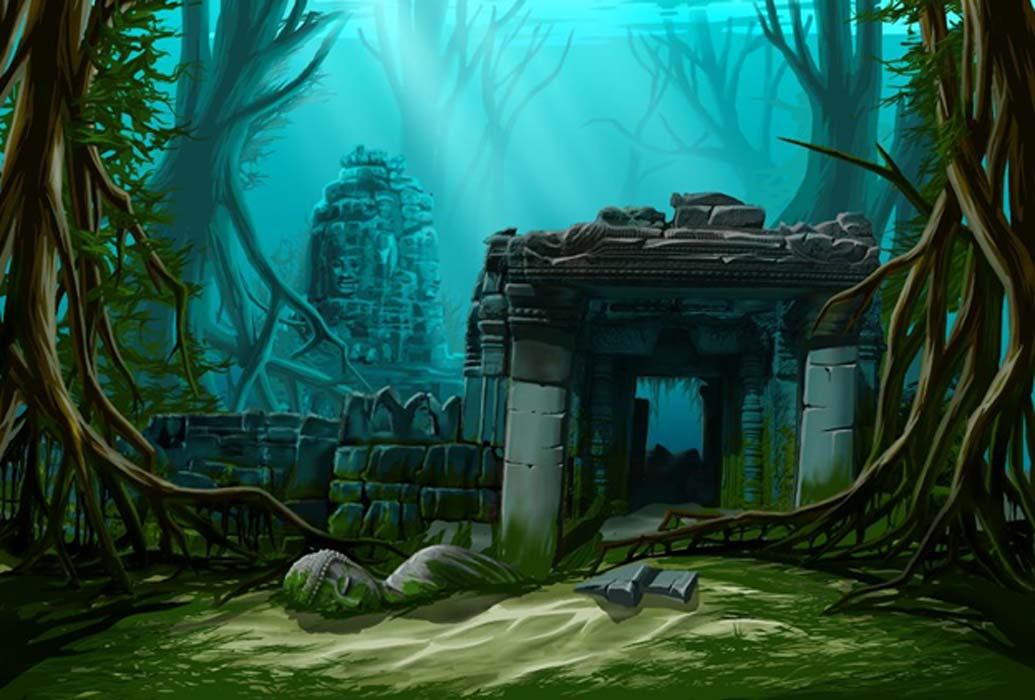
No comments:
Post a Comment